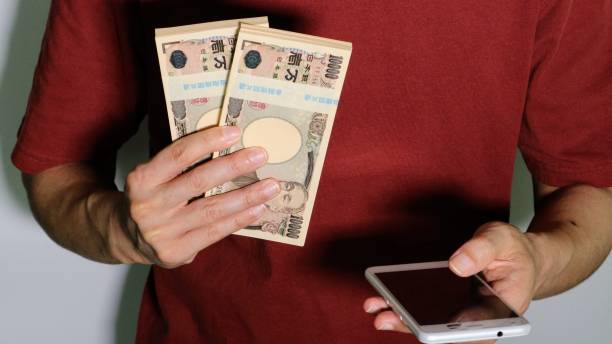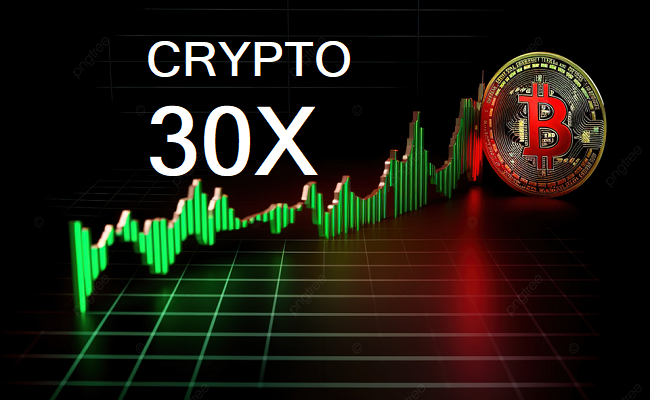Crypto
Cracking the Code of the Nikkei: Fintechzoom.com Nikkei 225 Unwrapped for the Curious and the Bold

Ever scrolled through market updates and stumbled upon fintechzoom.com Nikkei 225, scratching your head and wondering what that cryptic string of finance-speak means? You’re not alone. Despite being one of the world’s most closely watched indices, the Nikkei 225 often feels like a puzzle wrapped in a stock ticker, cloaked in a Japanese kimono of complexity.
Well, grab a cup of coffee, kick back, and let’s untangle the story behind the fintechzoom.com Nikkei 225—an index that’s as iconic to Japan as sushi and cherry blossoms. Whether you’re a budding investor, a data nerd, or just plain curious, this guide’s got you covered from Tokyo to Toronto.
# The Nikkei 225 at a Glance
A Star is Born
Picture this: It’s 1950. Japan’s economy is healing post-WWII, and a new barometer is needed to measure the nation’s financial pulse. Enter the Nikkei 225, Japan’s premier stock market index, launched by Nihon Keizai Shimbun—a major economic newspaper (yep, that’s where “Nikkei” comes from).
This index tracks 225 of the most powerful publicly listed companies on the Tokyo Stock Exchange. Think of it as Japan’s answer to the Dow Jones Industrial Average in the U.S.—but with its own unique flair.
Why Should You Care?
If Japan sneezes, the Nikkei 225 catches a cold—and investors everywhere reach for tissues. It’s that influential. From Toyota to Sony to Nintendo, the Nikkei 225 includes household names with global reach.
Investors use it to:
-
Gauge Japan’s economic health
-
Predict global trends (especially in tech and manufacturing)
-
Identify short- and long-term investment opportunities
-
Hedge against regional risks
# What Is Fintechzoom.com’s Take on the Nikkei 225?
The Platform’s Role in Your Financial Literacy Journey
Fintechzoom.com is not just another finance site—it’s like that savvy friend who explains complex stuff without putting you to sleep. When it comes to the fintechzoom.com Nikkei 225 content, the platform breaks down current movements, analyses patterns, and offers timely commentary that’s digestible, even for newbies.
So if you’re diving into Japanese markets or just trying to make sense of today’s numbers, fintechzoom.com Nikkei 225 updates offer:
-
Market snapshots in real-time
-
Detailed insights on price fluctuations
-
Company-specific news that impacts the index
-
Tools and charts to visualize historical data
# The Anatomy of the Nikkei 225
How It’s Calculated (Spoiler: It’s Not Market-Cap Weighted)
Unlike most major indices, the Nikkei 225 is price-weighted. What’s that, you ask?
In a price-weighted index:
-
A company with a higher stock price wields more influence.
-
Market cap doesn’t directly affect the weighting.
-
This can lead to distortions—small companies with high stock prices can skew the index more than large corporations with lower-priced shares.
Here’s how it’s basically calculated:
Sounds simple, but don’t let the math fool you—its implications are far-reaching.
Key Sectors Represented
The Nikkei 225 casts a wide net, but a few sectors dominate:
-
Technology & Electronics – Sony, Panasonic, etc.
-
Automobiles – Toyota, Honda, Nissan
-
Financial Services – Mitsubishi UFJ Financial, Mizuho
-
Consumer Goods – Fast Retailing (Uniqlo), Shiseido
-
Industrial Machinery – Fanuc, Komatsu
# Historical Milestones of the Nikkei 225
The Bubble Era (1980s)
Japan in the ‘80s was like a financial disco—stocks, real estate, and spirits were high. The Nikkei hit a record peak of 38,957.44 on December 29, 1989. And then… the bubble burst.
Cue the “Lost Decade,” and a downward spiral that haunted the nation for years.
The Road to Recovery
Through the 2000s and 2010s, thanks to Abenomics (economic reforms introduced by Prime Minister Shinzo Abe), structural reforms, and a global tech boom, the Nikkei started to regain its lost ground.
By 2023, it was hovering around the 30,000 mark again—a sign that Japan’s corporate titans were back in the game.
# Investing in the Nikkei 225: Yay or Nay?
Pros of Investing
-
Global Exposure: Japan is the third-largest economy—hard to ignore.
-
Tech & Innovation: You’re investing in cutting-edge tech, robotics, and engineering.
-
Currency Diversification: Diversify out of USD/Euro-centric assets.
-
Stable Companies: The Nikkei includes long-established giants.
Cons of Investing
-
Price-Weighted Distortion: Not always a clear reflection of actual economic performance.
-
Cultural Barriers: Different corporate governance standards than Western firms.
-
Deflation Worries: Japan has a long history of deflation and slow growth.
# Fintechzoom.com Nikkei 225 Insights: What’s Hot Now?
Want the skinny on today’s movers and shakers? Fintechzoom.com’s Nikkei 225 section usually highlights:
-
Daily highs and lows of major companies
-
Sector-specific shifts (tech up, finance down, etc.)
-
Major news catalysts (BoJ policy, geopolitical events)
-
Foreign investment flows
For example, if there’s a new semiconductor policy from the Japanese government, fintechzoom.com Nikkei 225 coverage can help you figure out how it’ll affect companies like Renesas or Tokyo Electron.
# FAQs About the Fintechzoom.com Nikkei 225
Q1: How often is the Nikkei 225 updated?
A1: Every second during Tokyo Stock Exchange trading hours. It’s a live, breathing entity.
Q2: Can I invest directly in the Nikkei 225?
A2: Not exactly. But you can buy ETFs (like the Nikkei 225 ETF: 1321.T) or futures that mirror its performance.
Q3: Is it only relevant to Japanese investors?
A3: Not at all! Investors worldwide track it for global portfolio balancing and insights into Asian markets.
Q4: Why does Fintechzoom.com focus on the Nikkei 225?
A4: Because it’s a key economic indicator, and Fintechzoom loves translating market complexity into plain English for everyone.
# Tips for First-Time Nikkei Trackers
-
Use Fintechzoom’s Alerts – They’ll keep you up-to-date without information overload.
-
Study Historical Trends – The Nikkei is cyclical. Patterns do repeat.
-
Watch the Yen – Currency shifts can deeply affect the index, especially for international investors.
-
Diversify – Don’t go all-in. Use Nikkei-based investments as a part of a broader portfolio.
-
Be Patient – Japan’s market isn’t a sprint—it’s a marathon.
# The Global Connection: Nikkei Meets the World
The Nikkei 225 doesn’t exist in a vacuum. Its moves often mirror or counterbalance:
-
Wall Street (S&P 500 / Dow) – U.S. policy changes ripple into Japanese markets.
-
Shanghai & Hang Seng Indexes – Regional tension or cooperation affects sentiment.
-
Oil & Commodities – Japan is a major importer, so prices matter.
-
Interest Rates Worldwide – Especially moves by the Bank of Japan or U.S. Federal Reserve.
What happens on Wall Street tonight could shape the Nikkei’s opening bell tomorrow.
Conclusion: Why the Fintechzoom.com Nikkei 225 Deserves Your Attention
So, what have we learned from our financial deep-dive? The fintechzoom.com Nikkei 225 isn’t just some obscure metric tucked away in Japanese finance. It’s a vibrant, complex, and revealing snapshot of one of the world’s most dynamic economies. From post-war miracles to tech-driven comebacks, the Nikkei has seen it all—and it’s not done evolving yet.
Whether you’re considering investing, just trying to sound smarter at parties, or genuinely fascinated by global markets, keeping an eye on fintechzoom.com Nikkei 225 updates could be your secret weapon.
Don’t let jargon scare you. The markets are for everyone—and now that you’ve cracked the code, the Nikkei 225 is yours to explore.
Crypto
Unlocking Tatasec’s Treasure Chest: The Most Valuable Resources You Didn’t Know You Needed

Ever stumbled across a platform so packed with potential that you wonder why the whole world isn’t talking about it? That’s exactly what it feels like when you dive into the ocean of tatasec valuable resources. Whether you’re navigating uncharted entrepreneurial waters or just hungry to sharpen your skills, Tatasec offers a toolkit like no other.
With the digital age galloping forward, finding trustworthy and impactful resources has become harder than ever. Everyone’s throwing content around, but very few are actually offering value. That’s where Tatasec steps in—not with flashy gimmicks or overhyped nonsense—but with solid, actionable, and truly valuable resources designed for real impact.
Let’s open up the treasure chest and see what’s inside.
The Origin of Tatasec: More Than Just Another Portal
Before we go spelunking for gold, it helps to understand what Tatasec is really all about.
So, what exactly is Tatasec?
Tatasec is a digital ecosystem—part knowledge hub, part collaborative space, and part innovation lab. It’s like a Swiss Army knife for creators, thinkers, and doers.
Founded with the belief that high-quality resources shouldn’t be locked behind paywalls or gatekept by elite institutions, Tatasec is all about democratizing access to information, tools, and networks. Their mission? Simple yet bold:
“To empower individuals and communities with the resources they need to build, learn, and thrive in a constantly evolving world.”
Tatasec Valuable Resources: A Look Inside the Vault
So what makes the tatasec valuable resources so…well, valuable? Let’s crack it open by diving into the core categories.
1. Digital Toolkits for Creators
Forget the endless Googling for templates, workflows, and design hacks. Tatasec offers downloadable toolkits made for:
-
Content creators (blog templates, editing presets, social media calendars)
-
Web developers (HTML/CSS snippets, starter codebases)
-
UX/UI designers (wireframe kits, mood boards, figma libraries)
Each toolkit is customizable, beginner-friendly, and—you guessed it—totally free.
2. Entrepreneurial Resources
Got a startup idea brewing? You’re in luck. Tatasec offers:
-
Business plan frameworks
-
Financial projection spreadsheets
-
Pitch deck templates
-
Branding guides and marketing funnels
They’re not just fluff—they’re built with insights from seasoned founders and consultants who’ve actually been there.
3. Knowledge Packs and Micro-Courses
No time for a 40-hour video course? Good news. Tatasec offers compact, info-packed learning kits you can consume over coffee:
-
15-minute lessons on AI, blockchain, or sustainability
-
Interactive PDFs with case studies and key takeaways
-
Real-world assignments for hands-on learning
4. Community & Mentorship Access
This one’s a game-changer. Inside the Tatasec ecosystem, users can:
-
Join niche communities by interest or industry
-
Get direct mentorship from experts (yes, real humans)
-
Attend free webinars, masterminds, and AMAs
This isn’t your run-of-the-mill comment section. It’s deep dialogue, peer reviews, and idea incubators in action.
Why Tatasec Valuable Resources Stand Out
Let’s face it—there are thousands of platforms shouting “value!” from the rooftops. But Tatasec walks the talk. Here’s why:
🌟 It’s Built by the Community, for the Community
Unlike top-down platforms that decide what you should learn, Tatasec curates based on community needs, feedback, and trends.
🔄 It’s Constantly Evolving
New resources drop every week. It’s like having a living, breathing library in your pocket.
💡 It Blends Theory and Action
No more abstract jargon or endless theory. Every resource comes with a practical action plan or application path.
🤝 It’s Inclusive and Accessible
From teenagers in remote villages to digital nomads in Bali, Tatasec’s design and ethos make it globally welcoming.
Real-World Impact: Stories from the Tatasecverse
Let’s not just talk the talk—here are real examples of how people have used Tatasec valuable resources to transform their lives.
🚀 Jaya’s Startup Launch
A young woman from Mumbai used Tatasec’s branding toolkit and pitch deck template to secure angel funding for her handmade jewelry startup. Today, she exports globally.
🧠 Marco’s Career Shift
Stuck in a job he hated, Marco took Tatasec’s “Crash Course in Ethical Hacking” over two weeks. Now, he’s freelancing as a cybersecurity analyst.
📚 Zanele’s Village Learning Hub
A teacher from rural South Africa downloaded free educational kits to start a weekend tech club. The community center now has 80+ kids learning basic coding.
These aren’t one-off miracles—they’re proof of how democratized resources can unlock massive potential.
How to Get Started With Tatasec Valuable Resources
Ready to dig in? Here’s a simple 4-step path to make the most of the platform:
-
Sign Up (It’s Free!)
Head over to tatasec.com and create your account. No credit card, no gimmicks. -
Pick Your Path
Whether you’re into coding, design, business, or sustainability, you’ll find a “starting path” tailored to your interest. -
Download Your First Toolkit
Choose one that excites you—maybe the “Startup Builder Kit” or the “Creative Writing Sprint.” -
Join a Community Circle
Share your goals, ask questions, and collaborate. This is where the magic really happens.
FAQs About Tatasec Valuable Resources
❓Is everything on Tatasec really free?
Yes! Tatasec operates on a freemium model. Core resources are free forever. Premium perks (like 1-on-1 coaching) are optional.
❓Can I contribute my own tools or courses?
Absolutely. Tatasec thrives on community contribution. You can submit templates, host webinars, or write guides.
❓Is Tatasec just for tech people?
Nope! While there’s a strong tech focus, there are tracks for writers, teachers, artists, activists—you name it.
❓Do the resources work offline?
Many are downloadable, especially PDFs, toolkits, and lessons. Perfect for limited internet zones.
❓How often is content updated?
Weekly! There’s a fresh drop of content every Friday like clockwork.
Bonus: Hidden Gems Within Tatasec Valuable Resources
Want to feel like a VIP insider? Here are a few under-the-radar gems:
-
Mindset Builders Deck – A printable card set to help reset your focus and beat procrastination
-
Startup Soundboard – Audio templates with motivational mantras and pitch practice guides
-
EcoToolkit – For those passionate about climate and sustainability action
Conclusion: Your Gateway to Limitless Potential
In a noisy world full of clickbait and content overload, tatasec valuable resources shine like a lighthouse for those truly eager to grow, build, and connect. It’s more than just a platform—it’s a movement, a mindset, and a mission rolled into one.
So, if you’ve been sitting on the fence, waiting for the “right time” to start that project, pivot careers, or pick up a new skill—this is your sign. Tatasec isn’t just waiting for you. It’s ready for you.
Let’s be honest: there’s never been a better moment to explore what’s possible. Dive in, explore the vault, and become part of a future that’s built—not bought.
Because sometimes, the most valuable resource isn’t what you download. It’s what you become.
Crypto
Myfastbroker Trading Apps: Your Complete Guide to Mobile Trading

The world of trading has transformed dramatically with the rise of mobile technology. Gone are the days when traders needed to sit in front of desktop computers to monitor markets and execute trades. Myfastbroker trading apps have emerged as a powerful solution for modern investors who want to trade on the go without compromising on functionality or security.
This comprehensive guide will walk you through everything you need to know about Myfastbroker trading apps. You’ll discover the key features that set these apps apart, learn how to navigate the platform effectively, and understand why thousands of traders choose Myfastbroker for their mobile trading needs. Whether you’re a beginner taking your first steps into trading or an experienced investor looking for a reliable mobile platform, this article will provide valuable insights to help you make informed decisions.
What Makes Myfastbroker Trading Apps Stand Out
Myfastbroker has built its reputation on delivering user-friendly trading solutions that combine advanced functionality with intuitive design. The company’s mobile apps reflect this philosophy, offering traders a comprehensive platform that doesn’t sacrifice features for convenience.
The apps cater to various trading styles and experience levels. Day traders appreciate the real-time market data and quick execution speeds, while long-term investors value the research tools and portfolio management features. This versatility has made Myfastbroker apps popular among diverse trading communities.
One of the standout aspects of Myfastbroker is its commitment to continuous improvement. The development team regularly updates the apps based on user feedback and market trends, ensuring that traders always have access to cutting-edge tools and features.
Key Features That Power Your Trading Experience
Real-Time Market Data and Charts
Myfastbroker apps provide comprehensive market data that updates in real-time. Traders can access detailed price charts with multiple timeframes, from minute-by-minute movements to monthly trends. The charting tools include technical indicators, drawing tools, and pattern recognition features that help traders analyze market movements effectively.
The apps support various chart types, including candlestick, line, and bar charts. This flexibility allows traders to choose the visualization method that best suits their analysis style.
Advanced Order Management
The order management system in Myfastbroker apps offers sophisticated options for trade execution. Users can place market orders, limit orders, stop-loss orders, and trailing stops. The app also supports conditional orders, allowing traders to set up complex trading strategies that execute automatically when specific market conditions are met.
Order modification and cancellation features are easily accessible, giving traders full control over their positions even when they’re away from their primary trading setup.
Portfolio Tracking and Analysis
Myfastbroker apps include comprehensive portfolio management tools that help traders track their investments across multiple asset classes. The portfolio view displays real-time profit and loss calculations, asset allocation breakdowns, and performance metrics.
Historical performance tracking allows users to analyze their trading results over different time periods, helping them identify successful strategies and areas for improvement.
News and Market Analysis
Staying informed is crucial for successful trading, and Myfastbroker apps deliver relevant market news and analysis directly to users’ mobile devices. The news feed includes real-time updates on market-moving events, earnings announcements, and economic indicators.
Professional market analysis and commentary help traders understand the broader context behind price movements and identify potential trading opportunities.
Step-by-Step Guide to Getting Started
Download and Installation
Begin by downloading the Myfastbroker app from your device’s official app store. The app is available for both iOS and Android platforms. Ensure you download the official app by verifying the developer name and reading user reviews.
After installation, launch the app and you’ll be prompted to either log in with existing credentials or create a new account.
Account Setup and Verification
New users need to complete the registration process, which includes providing personal information and verifying identity. This step is essential for regulatory compliance and account security.
Upload the required documents through the app’s secure interface. The verification process typically takes 1-2 business days, during which you can explore the app’s features in demo mode.
Funding Your Account
Once your account is verified, you can fund it using various payment methods supported by the app. Options typically include bank transfers, credit cards, and digital payment platforms.
The app provides clear instructions for each funding method, including minimum deposit requirements and processing times.
Placing Your First Trade
Start by exploring the trading interface and familiarizing yourself with the layout. Use the search function to find the asset you want to trade, then review the current market price and recent price movements.
Select your order type, enter the quantity, and review the order details before confirming the trade. The app will display the expected costs and potential profit/loss scenarios.
Pro Tips for Maximizing Your Trading Success
Develop a Trading Strategy
Successful trading requires a well-defined strategy that aligns with your risk tolerance and investment goals. Use the app’s backtesting features to evaluate potential strategies using historical data before risking real capital.
Consider starting with a simple strategy and gradually adding complexity as you gain experience with the platform.
Utilize Risk Management Tools
Always use stop-loss orders to limit potential losses on your trades. The Myfastbroker app makes it easy to set these protective orders when you enter a position.
Position sizing is crucial for long-term success. Never risk more than you can afford to lose on a single trade, and consider using the app’s portfolio analysis tools to ensure proper diversification.
Stay Informed but Avoid Information Overload
While the app provides extensive market information, focus on the news and analysis most relevant to your trading strategy. Too much information can lead to analysis paralysis and poor decision-making.
Set up personalized alerts for the assets you’re most interested in, so you receive notifications about significant price movements or news events.
Practice with Demo Features
Take advantage of any demo or paper trading features available in the app. These tools allow you to practice trading strategies without risking real money, helping you build confidence and refine your approach.
The Advantages of Choosing Myfastbroker Apps
Accessibility and Convenience
Mobile trading apps provide unparalleled flexibility, allowing you to monitor markets and execute trades from anywhere with an internet connection. This accessibility is particularly valuable for traders who travel frequently or have busy schedules.
The apps are optimized for mobile devices, ensuring smooth performance even on older smartphones and tablets.
Cost-Effective Trading
Myfastbroker apps typically offer competitive pricing structures with transparent fee schedules. Many features that would require expensive desktop software are available at no additional cost through the mobile app.
The ability to trade without traditional broker fees can significantly impact your overall trading profitability, especially for frequent traders.
Educational Resources
The apps often include educational materials such as tutorials, webinars, and market analysis. These resources help users improve their trading skills and stay updated on market developments.
Interactive learning features make it easy to understand complex trading concepts and apply them in real-world scenarios.
Security Measures and Data Protection
Multi-Layer Security Architecture
Myfastbroker implements robust security measures to protect user accounts and personal information. The apps use encryption protocols to secure data transmission and storage.
Two-factor authentication adds an extra layer of protection, requiring users to verify their identity through a secondary device or app.
Regulatory Compliance
The platform adheres to strict regulatory standards, ensuring that user funds are protected and trading activities are conducted transparently. Regular audits and compliance checks help maintain these high standards.
Privacy Protection
User data is handled according to strict privacy policies that limit how information is collected, used, and shared. The apps include privacy settings that allow users to control their data sharing preferences.
Customer Support and Available Resources
Multiple Support Channels
Myfastbroker provides customer support through various channels, including in-app chat, email, and phone support. The support team is trained to handle technical issues, account questions, and trading-related inquiries.
Response times are typically fast, with many issues resolved within hours of submission.
Knowledge Base and FAQ
The apps include comprehensive help sections with frequently asked questions, troubleshooting guides, and detailed explanations of features and functionality.
Video tutorials and step-by-step guides help users quickly learn how to use specific features effectively.
Community Features
Some versions of the app include community features where users can share trading ideas, discuss market trends, and learn from experienced traders.
These community aspects can be valuable for new traders looking to learn from others’ experiences and strategies.
How Myfastbroker Compares to Other Trading Apps
Feature Comparison
When compared to other popular trading apps, Myfastbroker stands out for its comprehensive feature set and user-friendly interface. While some competitors may excel in specific areas, Myfastbroker provides a well-rounded platform that meets most traders’ needs.
The app’s combination of advanced charting tools, real-time data, and educational resources creates a complete trading ecosystem.
Pricing and Fees
Myfastbroker’s fee structure is competitive within the industry, often offering better value than traditional brokers. The transparent pricing model helps traders understand exactly what they’re paying for each service.
User Experience
The app’s intuitive design makes it accessible to beginners while still providing the advanced features that experienced traders require. This balance is difficult to achieve and represents a key advantage over competitors that target only specific user segments.
Real User Experiences and Success Stories
Beginner Success Stories
Many new traders have found success using Myfastbroker apps to learn the basics of trading and gradually build their skills. The combination of educational resources and user-friendly interface helps reduce the learning curve typically associated with trading.
Experienced Trader Testimonials
Professional traders appreciate the app’s advanced features and reliability. The ability to execute complex strategies on mobile devices has enabled many traders to maintain their trading activities while traveling or away from their primary workstations.
Long-term Investment Success
Investors using the app for long-term portfolio management have reported positive experiences with the tracking and analysis tools. The ability to monitor investments and make adjustments on the go has helped many users stay more engaged with their investment strategies.
Frequently Asked Questions
Q: Is the Myfastbroker trading app free to download and use?
A: Yes, the app is free to download from official app stores. However, trading activities may involve fees and commissions as outlined in the platform’s fee schedule.
Q: What devices are compatible with Myfastbroker apps?
A: The apps are available for iOS and Android devices. Specific compatibility requirements are listed in the app store descriptions.
Q: How secure is trading through the mobile app?
A: Myfastbroker implements bank-level security measures including encryption, two-factor authentication, and regulatory compliance to protect user accounts and data.
Q: Can I access all trading features through the mobile app?
A: Most trading features are available through the mobile app, though some advanced functions may require the desktop platform. The app clearly indicates which features are available on mobile.
Q: What should I do if I encounter technical issues with the app?
A: Contact customer support through the in-app chat feature, email, or phone. The support team can help resolve technical issues and provide guidance on using app features.
Crypto
Crypto30x.com ASX: What You Need to Know About This Trading Platform and Its Market Impact

As cryptocurrencies become more popular around the world, platforms like Crypto30x.com are getting a lot of attention, especially from investors who also trade on traditional markets like the ASX (Australian Securities Exchange). If you’re wondering what Crypto30x.com is, how it works, and why people are talking about it in the same breath as the ASX, you’re in the right place.
What Is Crypto30x.com?
Crypto30x.com is a cryptocurrency trading platform that offers leveraged tradin, —meaning users can trade with more money than they have in their account. On this platform, you can trade digital assets like Bitcoin, Ethereum, and other altcoins with up to 30x leverage. This means if you have $100, you can trade as if you had $3,000.
While this kind of trading can offer high returns, it also comes with high risk. That’s why it’s important to understand the tools and risks before jumping in.
Key Features of Crypto30x.com
Here are some standout features that make this platform unique:
-
Up to 30x Leverage: Amplify your trading power and potential profits (but be cautious—losses can also be bigger).
-
Wide Range of Cryptocurrencies: Trade well-known coins and newer tokens in one place.
-
Simple Interface: Even beginners can navigate the platform easily thanks to its clean, user-friendly design.
-
Educational Content: Tutorials, market guides, and trading tips are available for new users.
-
Strong Community Support: Many traders share insights through forums, helping each other learn and grow.
The Link Between Crypto30x.com and ASX
Now, let’s talk about the ASX (Australian Securities Exchange) and how it connects to Crypto30x.com.
Is Crypto30x.com Regulated by the ASX?
No, Crypto30x.com is not directly regulated by the ASX. The ASX is a traditional stock exchange that handles company shares and other financial products, mostly within Australia. However, as cryptocurrencies continue to grow in popularity, many investors from ASX-regulated markets are now exploring crypto trading.
This crossover is sparking interest in platforms like Crypto30x.com, even if they operate under different regulations.
Why Traditional Investors Are Interested
Traditional investors, especially those used to the ASX, are now looking at crypto as a way to diversify their portfolios. Some reasons include:
-
The high return potential of crypto markets
-
The ability to trade 24/7
-
The appeal of new financial technologies
Platforms like Crypto30x.com offer tools that traditional exchanges don’t—like leverage and a wider selection of digital assets. This makes them attractive to experienced investors who are comfortable with higher risk.
Future Possibilities: Integration?
While there’s no formal partnership between Crypto30x.com and the ASX, we could see closer ties in the future. As governments and financial bodies create clearer rules for crypto, it’s possible that trading platforms may start working with regulated exchanges to build hybrid models that combine the best of both worlds—crypto innovation and market regulation.
Risks of Using Leverage on Crypto30x.com
Trading with leverage can multiply your profits, but it can also wipe out your investment quickly if the market moves against you. Some key risks include:
-
High Volatility: Crypto prices can swing wildly in minutes.
-
Liquidation: Your position may be closed automatically if losses reach a certain level.
-
Emotional Stress: Fast gains and losses can lead to poor decision-making.
Always use stop-loss orders and never invest more than you can afford to lose.
Tips for Staying Safe and Smart
If you plan to use Crypto30x.com, here are some tips to keep in mind:
-
Do Your Research: Learn about the market before trading.
-
Check Platform Security: Make sure your data and funds are protected.
-
Use Demo Accounts: Practice before using real money.
-
Stay Updated: Follow crypto news and trends to make informed decisions.
Final Thoughts
The interest in Crypto30x.com and ASX shows how traditional and digital markets are starting to overlap. While Crypto30x.com is not regulated by the ASX, it is catching the attention of ASX-style investors who want to explore the crypto world with powerful tools like leverage.
If you’re considering entering the crypto market, start slow, stay informed, and understand the risks, especially when using leverage. Platforms like Crypto30x.com offer exciting opportunities, but success depends on strategy, research, and caution.
Frequently Asked Questions (FAQs)
1. Is Crypto30x.com connected to the ASX?
No, Crypto30x.com is not directly connected or regulated by the ASX. However, it attracts interest from investors who are familiar with ASX trading due to its advanced crypto features and leveraged trading options.
2. Can I trade ASX stocks on Crypto30x.com?
No, Crypto30x.com focuses only on cryptocurrencies and does not offer trading of traditional ASX stocks or securities.
3. Is leveraged trading on Crypto30x.com safe?
Leveraged trading can be profitable, but it also comes with high risks. Traders should have a solid understanding of the market, use proper risk management tools, and never invest more than they can afford to lose.
4. Does Crypto30x.com follow any regulations?
Crypto30x.com operates under its own set of compliance measures depending on its jurisdiction, but it is not regulated by the ASX or any Australian government body. Traders should always review a platform’s legal disclosures before signing up.
5. Why are ASX investors showing interest in Crypto30x.com?
ASX investors are looking to diversify their investments. Crypto30x.com offers access to a fast-moving, high-growth market that traditional stock exchanges can’t always match in terms of speed and flexibility.
-

 Lifestyle5 months ago
Lifestyle5 months agoEnhancing Online Safety: The Benefits of Using Bold2fa
-

 News4 months ago
News4 months agoSteven Maranga Nyambega: A Visionary Leader Shaping the Future
-

 Lifestyle1 month ago
Lifestyle1 month ago“Livpure Colibrim: A Whirlwind Romance Between Water and Wonder”
-

 Business2 months ago
Business2 months agoFFBooru: A Complete Guide to Navigation and Community Engagement
-

 Lifestyle1 month ago
Lifestyle1 month agoUnlocking the Mystery of Chscampamp.org: Your Ultimate Guide to the Hidden Gem Online
-

 Lifestyle5 months ago
Lifestyle5 months agoUnveiling Drooski18: The Rise of a Digital Influencer
-

 Fashion2 months ago
Fashion2 months agoUnlocking the Magic of Styleinventure com: Where Trend Meets Transformation
-

 News2 months ago
News2 months agoThe Magic Behind Names: Exploring Ite:mommyandlove.com/baby-names/ for Your Little One’s Perfect Identity
